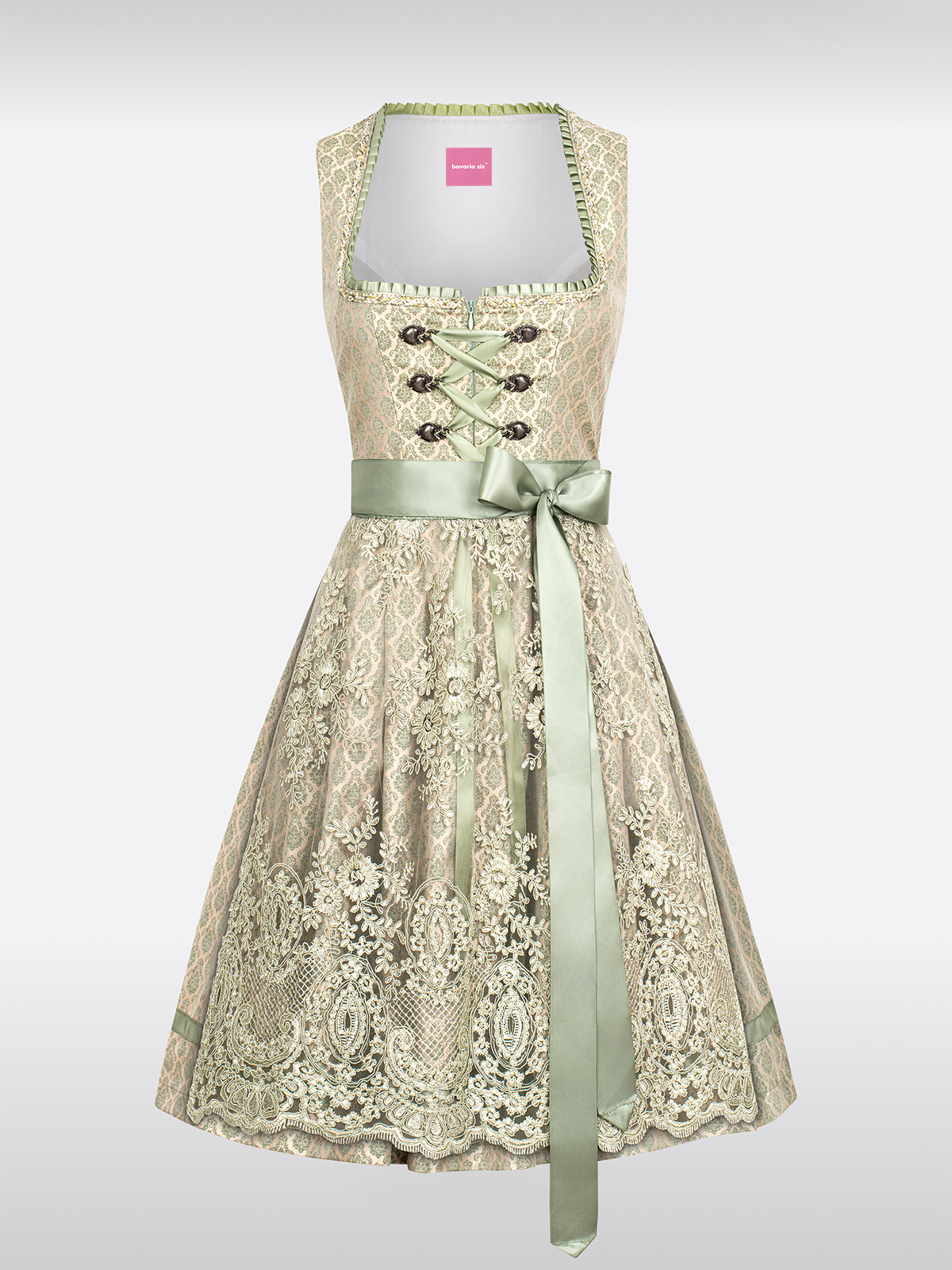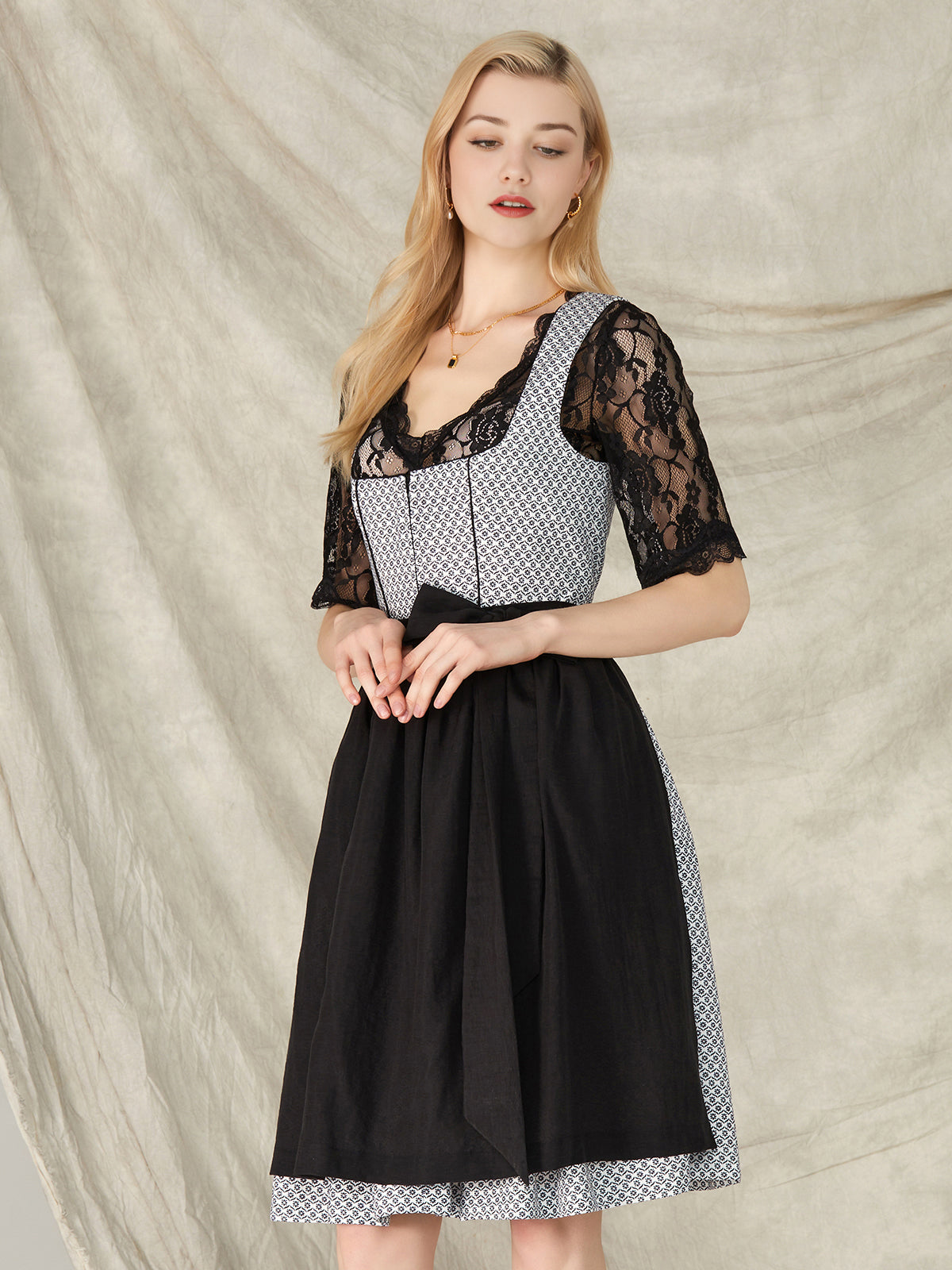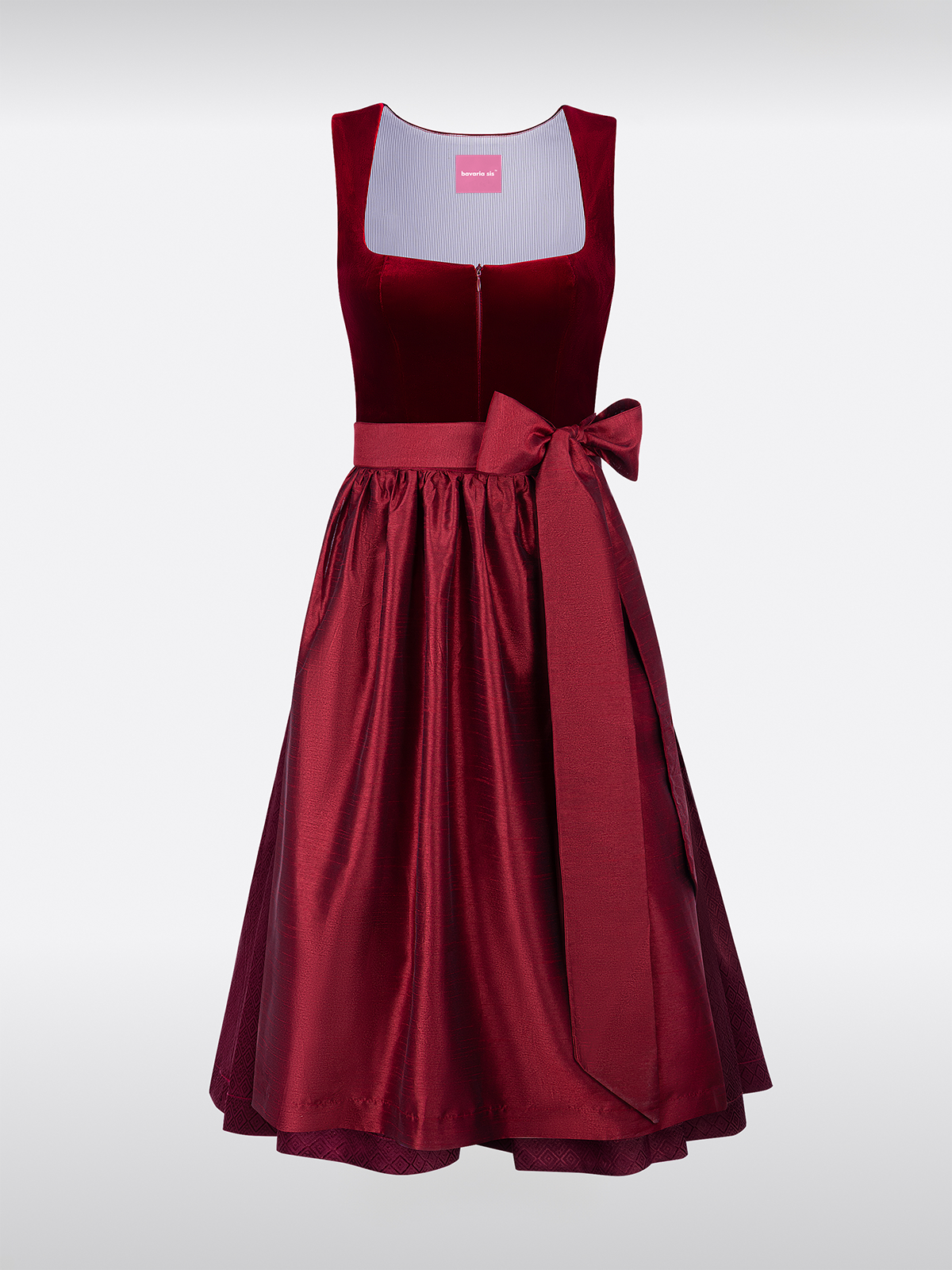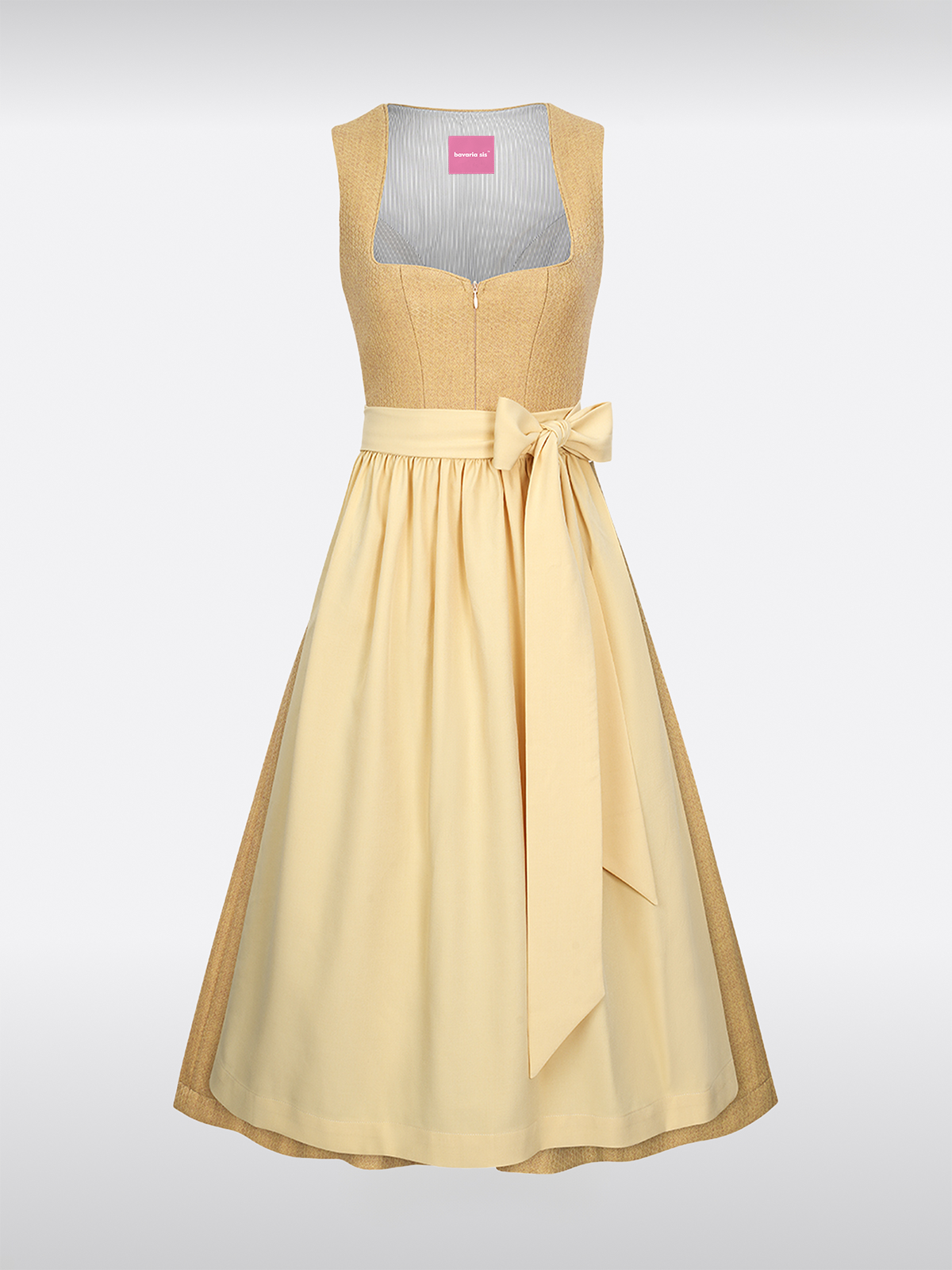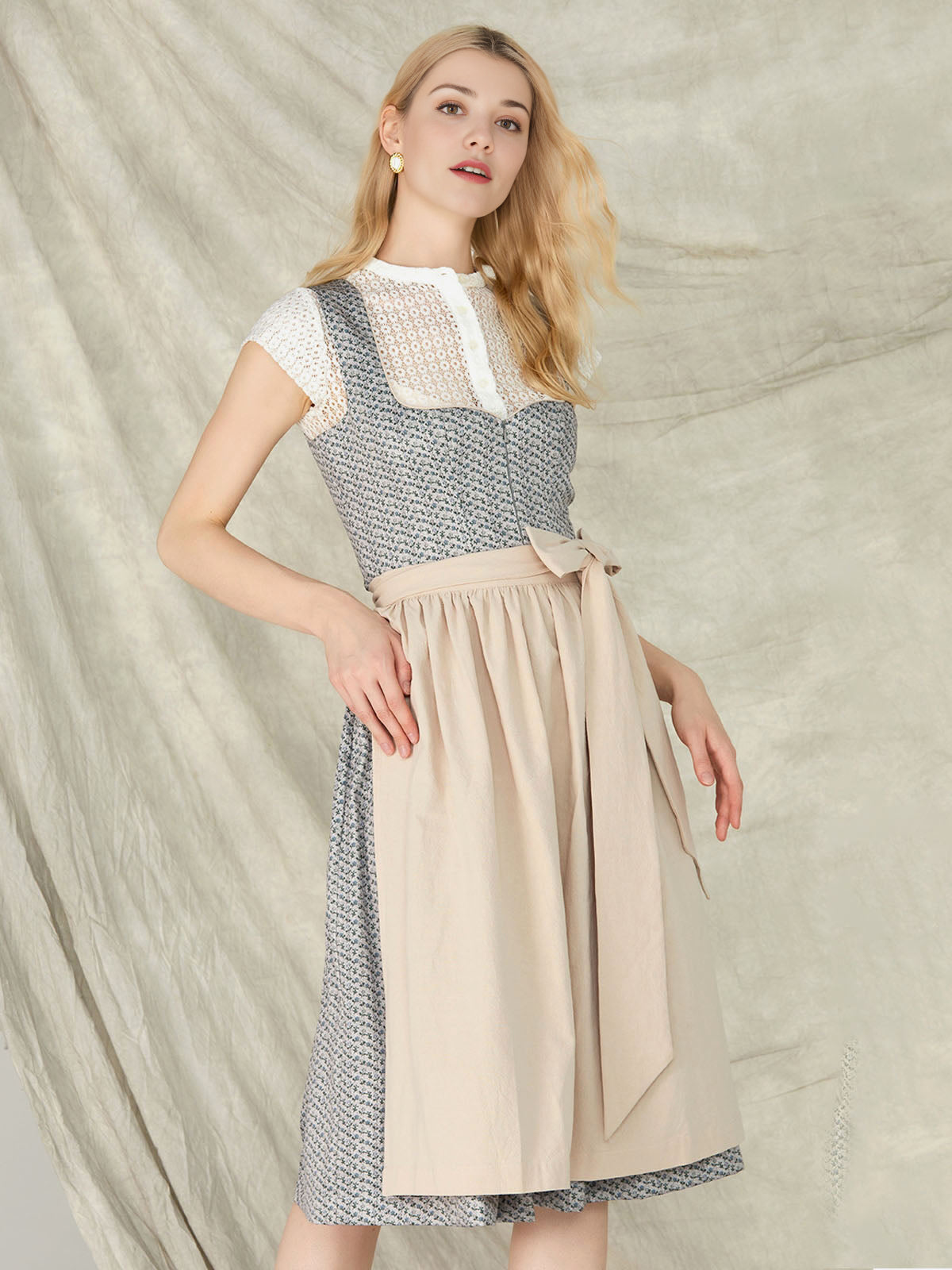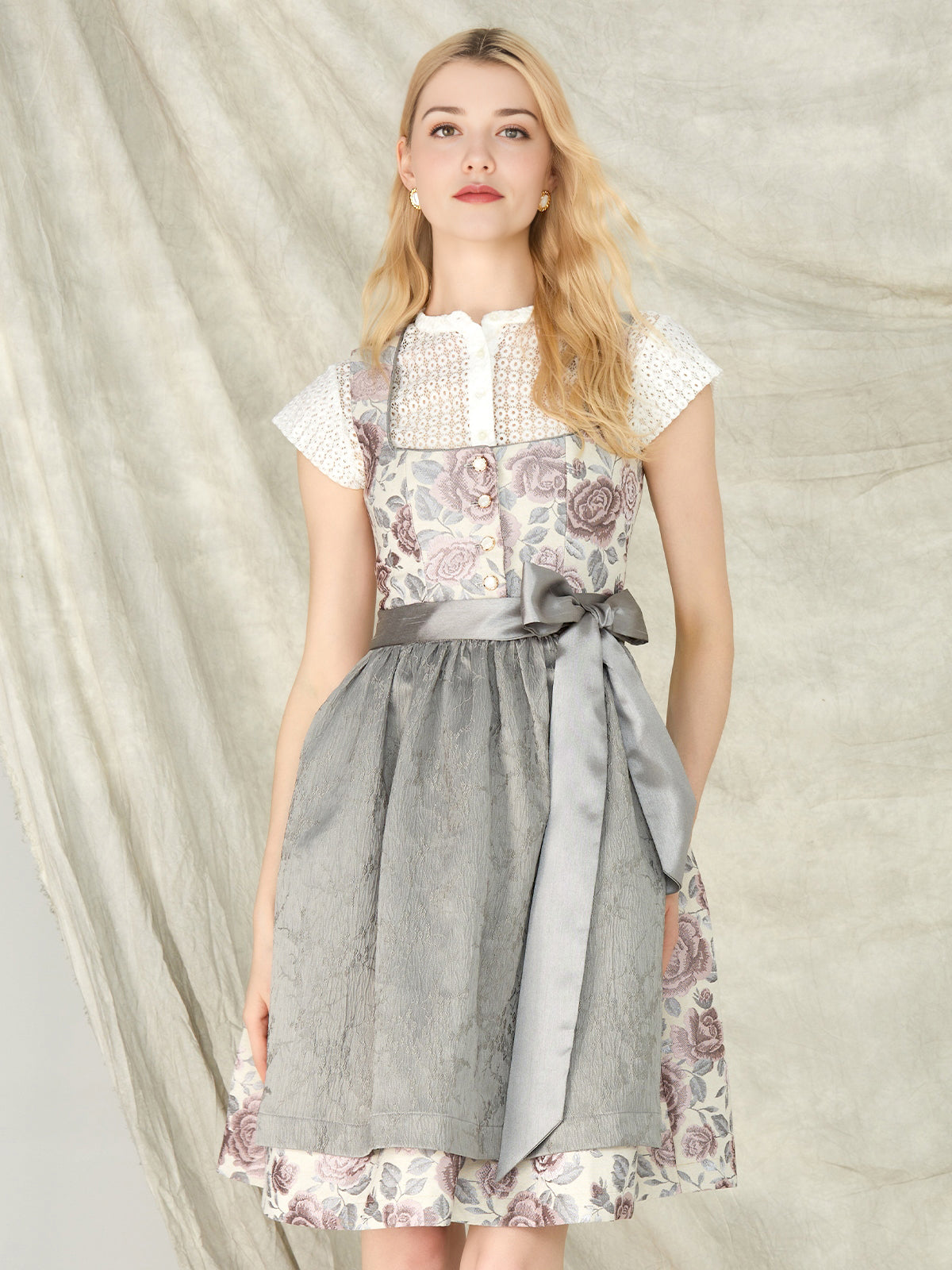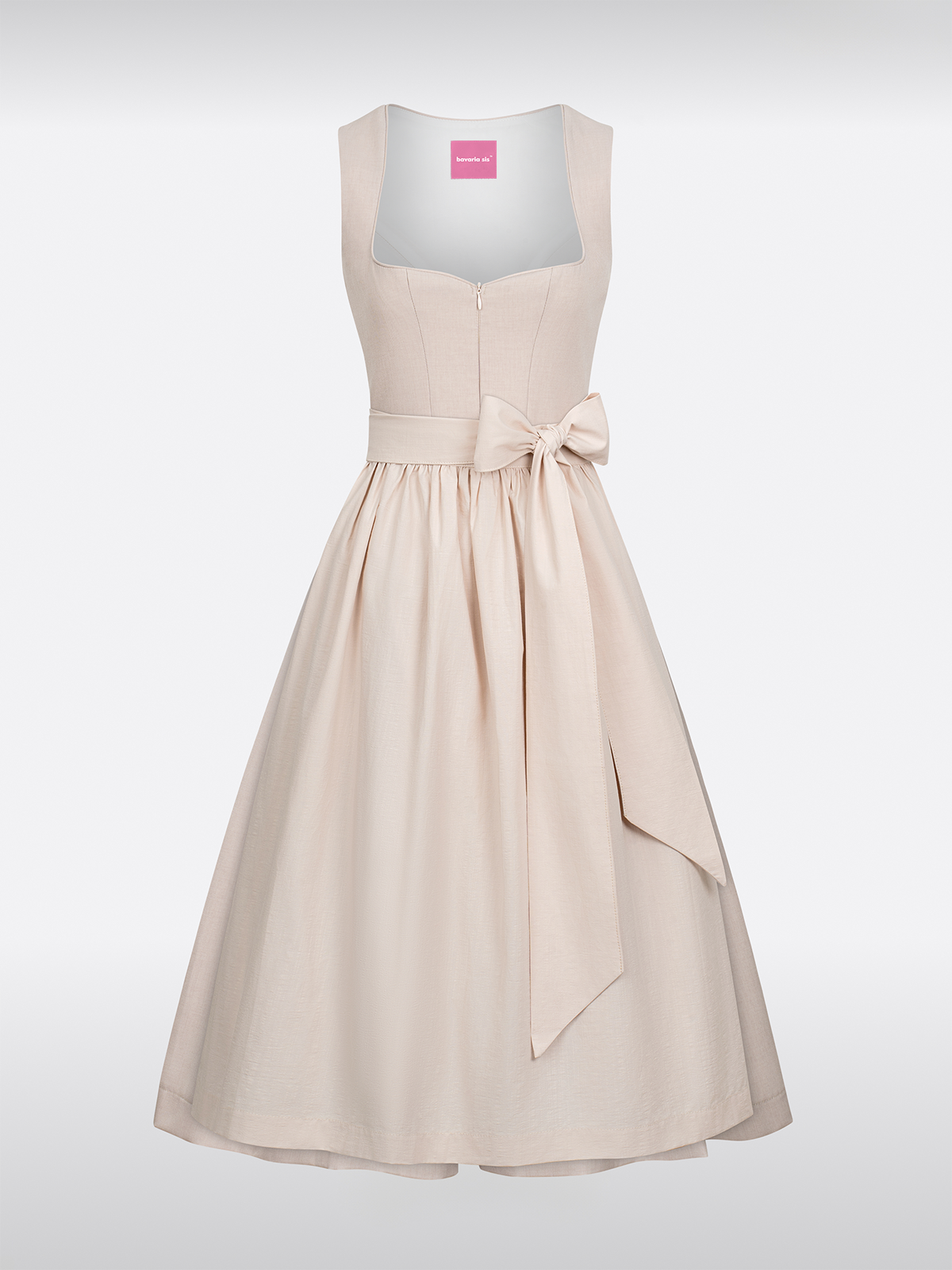Introduction: The timeless fascination of black
In the world of fashion, black is considered the ultimate color of elegance and sophistication. No other garment embodies this duality as perfectly as the black dirndl – a symbol of Bavarian tradition that has acquired a new dimension of mysticism through modern interpretations. This article takes you into the world of black midi dirndl, the Dirndl with black blouse and shows you how you can make this piece of clothing a real eye-catcher – whether at Oktoberfest or at a night party.
Traditional basis: Black embroidery in Bavarian traditional dress
The history of the black costume
The origins of the black dirndl dates back to the 19th century, when noble women in Bavaria had their white dirndls replaced with darker tones to distinguish themselves from the peasant population. black embroidery on the hem or neckline served not only as decoration, but also as a status symbol. Today, these intricate patterns still tell stories:
- Motifs: roses, edelweiss or geometric ornaments in silver or white
- Materials: Silk, cotton or linen with hand-embroidered details
- Regional peculiarities: In the Allgäu, plant motifs dominate, while Munich prefers baroque decorations
Modern interpretation: slim cuts and elegant details
The revolution of the slim silhouette
The contemporary version of the black midi dirndl focuses on body-hugging cuts, using modern techniques:
- Waist: Set-in waist and slightly flared skirt for a feminine silhouette
- Fabrics: Stretch cotton blends or fine crepe fabrics for optimal comfort
- Decoration: Silver applications at the sleeve ends or at the skirt hem
"The modern black dirndl combines the austerity of black with the playfulness of embroidery – a perfect balance between tradition and modernity."
The magic of accessories
To Dirndl with black blouse To enhance the value, the following combinations are recommended:
- Silver jewelry: Massive pendant necklaces or filigree earrings
- Lace trim: Fine lace adds a romantic touch to a blouse or skirt hem
- Belts: Wide leather belts with metal buckles
Cultural History: Black at Oktoberfest
From mourning color to fashion statement
As recently as the 19th century, black was considered the color of mourning in Bavaria. This changed radically in 1810 when the first celebrations for the wedding of Ludwig I and Therese took place. black dirndl of the nobility marked the beginning of a new era:
- 1850: First documented use of black as a festive color
- 1930s: National Socialists banned colorful traditional costumes in favor of dark tones
- 1980s: The rediscovery of black as an elegant alternative
Today, what counts is black midi dirndl are among the most popular options at the Wiesn. According to Oktoberfest statistics, 38% of visitors already choose dark tones instead of classic white.
Night party styling: From traditional dress to eye-catcher
For the after-dark hours
The black dirndl is perfect for parties – with the right accessories it transforms from a traditional daytime outfit into a glamorous evening outfit:
Must-haves for the party look:
- Fur coat: Short fox fur or artificial fur in black
- Metal accessories: necklaces with large pendants or bracelets
- Shoes: Stilettos instead of traditional shoes
- Make-up: Smokey eyes in grey and silver tones
"With a black midi dirndl create the perfect mix between respect for tradition and modern self-expression."
Combination tips
- Casual chic: Dirndl with black blouse + leather jacket + ankle boots
- Glamorous: Black dirndl with sequin trim + clutch
- Rocking: With leather bracelets and boots
Conclusion: Black elegance for every generation
The black dirndl has evolved from a peasant work dress to an iconic fashion trend. Its ability to combine tradition with modern elegance makes it a timeless piece of clothing. Whether at Oktoberfest or a night out – with the right styling, your black midi dirndl to prove that fashion knows no boundaries.
Let yourself be seduced by the dark beauty of this garment and discover how versatile tradition can be!

